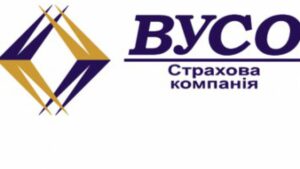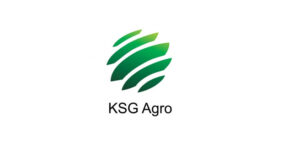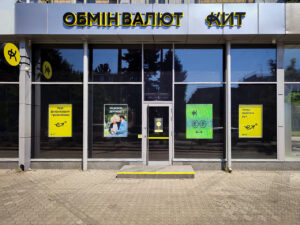
According to information published in the Ukrainian media, former Secretary of the National Security and Defence Council (NSDC) of Ukraine Oleksandr Litvinenko may become the next Ukrainian ambassador to Serbia. This was reported by Verkhovna Rada deputy Oleksiy Goncharenko on his Telegram channel, citing sources in the presidential administration.
It is reported that Vladimir Zelensky will soon approve Litvinenko’s appointment to the diplomatic mission in Belgrade by decree.
There has been no official confirmation from the Office of the President or the Ministry of Foreign Affairs of Ukraine yet.
Oleksandr Valeriyovych Litvinenko, born on 27 April 1972 in Kyiv, is a Ukrainian statesman and public figure.
Education: graduated from the Institute of Cryptography, Communications and Informatics of the Russian FSB Academy (1994), received academic degrees in Kyiv and London.
He began his career in the Security Service of Ukraine (1994–1998), then held positions in the National Security and Defence Council, the Security Service and the National Institute for Strategic Studies.
In 2021–2024, he headed the Foreign Intelligence Service of Ukraine.
On 26 March 2024, by presidential decree, he became Secretary of the National Security and Defence Council, holding this position until July 2025, after which he was dismissed.
Litvinenko is a Doctor of Political Science, professor, major general, and Honoured Worker of Science and Technology of Ukraine.
According to Volodymyr Zelenskyy, Litvinenko is ‘a professional with an excellent reputation,’ and he himself is a key figure in the formation of diplomatic strategies.
It is expected that after the decree is signed, the appointment will be sent to the Serbian Assembly for approval. If the candidacy is approved, Alexander Litvinenko will head the Ukrainian diplomatic mission in Belgrade.
The main task is to strengthen bilateral political and economic dialogue, strengthen Ukraine’s position in the Balkans and promote European integration.
The appointment of Oleksandr Litvinenko as Ukraine’s ambassador to Serbia reflects Kyiv’s desire to strengthen its diplomatic presence in the Balkans. His experience working in the National Security and Defence Council, the Foreign Intelligence Service, and strategic institutions makes him a strong candidate for strengthening Ukrainian-Serbian relations.

From November 1, 2025, Poland will stop accepting Ukrainian refugees in collective accommodation centers, with the exception of members of so-called protected groups: pensioners, pregnant women, and people with disabilities. This was reported by Polish Radio, citing a decision taken by the Polish Council of Ministers at a meeting on July 16.
According to Joanna Bachanek, press secretary of the Mazovia Province, every Ukrainian citizen has the right to free accommodation in shelters for 120 days after arriving in Poland.
After this period, a period of financial participation begins, i.e., additional payments for accommodation and food.
“More than half of the residents of collective accommodation centers already pay for part of their stay. After November 1, such centers will operate exclusively for the elderly, pregnant women, and people with disabilities,” Bahanek said.
According to the authorities, there are currently about 3,000 Ukrainians living in the Mazovia Province, while there are only about 1,000 places available.
For the remaining Ukrainian citizens, the Polish authorities are planning to launch the “Wspólnie do niezależności” (“Together for Independence”) program, which provides:
The program is expected to enable gradual adaptation and transition from a system of state support to a model of independent living.

The Plus program, which the UKRNAFTA filling station network implements jointly with the Ministry of Defense of Ukraine within the Army+ application, demonstrates stable efficiency and real support for the military.
Since the start of the project in December 2024, the military has refueled 13.3 million liters of fuel. The savings amounted to UAH 36.1 million. Another UAH 4.2 million was saved on cafe products and UAH 707.9 thousand on goods in the stores at the filling stations. In total, almost 100,000 military personnel have already taken advantage of the special discounts.
We remind you of the discounts for the military with Army+ at UKRNAFTA filling stations:
* -3 UAH/l for gasoline and diesel (up to 200 liters per month)
* UAH 0.5/l for liquefied gas (up to 200 liters per month)
* -30% for cafe products
* -10% for goods in stores (except for alcohol, tobacco and promotional goods, up to 2000 UAH/month).
UKRNAFTA consistently provides special service conditions for the defenders of Ukraine. The company thanks everyone who serves and continues to support the military every kilometer of their journey.
“Ukrnafta is the largest oil company in Ukraine and the operator of the national network of filling stations. In March 2024, the company took over management of Glusco’s assets and operates 545 filling stations – 461 owned and 84 managed.
The company is implementing a comprehensive program to restore operations and update the format of its filling stations. Since February 2023, the company has been issuing its own fuel coupons and NAFTAKarta cards, which are sold to legal entities and individuals through Ukrnafta-Postach LLC.
Ukrnafta’s largest shareholder is Naftogaz of Ukraine with a 50%+1 share.
In November 2022, the Supreme Commander-in-Chief of the Armed Forces of Ukraine decided to transfer to the state a share of corporate rights of the company owned by private owners, which is now managed by the Ministry of Defense.

On July 17, JSC “Oschadbank” opened the bidders’ offers for voluntary medical insurance of employees. As reported in the system of electronic public procurement Prozorro, the offer of the only bidder – IC “VUSO” – amounted to 134.285 million UAH. The expected cost of purchasing services is UAH 134.3 mln.
As it was informed, the winner of the similar tender a year ago was also IC “VUSO” with the price offer of UAH 114,2 mln against the expected cost of UAH 114,8 mln.
IC “VUSO” was founded in 2001. It is a member of MTSBU and NASU, a participant of the agreement on direct settlement of losses and a member of the Nuclear Insurance Pool.

KSG Agro has updated the herd at its pig farm in Dnipropetrovs’k region with 500 sows of Danish genetics, which will increase the efficiency of pig breeding by 15-20%, the group’s press service reports.
According to the report, the agricultural holding has already received the second batch of 250 purebred sows of Danish Pig Genetics from the supplier Breeders of Denmark A/S (Denmark). The first batch of the same volume was delivered to the company at the end of May this year.
Thus, the agricultural holding has completed the planned renewal of the pig herd with Danish genetics sows, which have high reproductive efficiency and are capable of producing high-quality piglets that will later become valuable fattening animals. This herd renewal will allow KSG Agro to replenish its pig population with four thousand of the most stable, highly productive F-1 hybrid sows this year.
“In the difficult conditions of the wartime period, realizing that the country’s food security depends on us, we focus on improving the efficiency of the pig production. We have always relied on the world’s best pig genetics, and the current partnership with the Danish Breeders of Denmark A/S is a logical continuation of this strategy. I am confident that this year we will see a 15-20% increase in production efficiency due to the renewal of the herd. These are quite realistic plans,” said Sergiy Kasyanov, Chairman of the Board of Directors of KSG Agro, as quoted in the statement.
KSG Agro noted that it had invested several hundred thousand euros in the renewal of its pig herd with 500 sows, but did not name a specific amount under the terms of the contract.
KSG Agro, a vertically integrated holding company, is engaged in pig production, as well as the production, storage, processing and sale of grains and oilseeds. Its land bank in Dnipropetrovska and Khersonska oblasts is about 21 thousand hectares.
According to KSG Agro, it is one of the top five pork producers in Ukraine. In 2023, the agricultural holding started implementing a “network-centric” strategy, which will move from developing a large location to a number of smaller pig farms located in different regions of Ukraine.

KYT Group, one of the leaders in the currency exchange and financial services market in Ukraine, continues to dynamically expand its network in key cities of the country with high economic activity.
In Dnipro, the 99th branch of the KYT Group brand network, which has a national coverage and covers 31 settlements of Ukraine: from large metropolitan areas to cities with high economic activity, welcomes its first customers.
This is the sixth branch directly in Dnipro city and the ninth within the region, where one branch operates in Kamianske and two more in Kryvyi Rih. Expansion of KYT Group network presence in Dnipro is a response to the consistently high demand among the city and region residents for transparent quality service and favorable conditions from the national leader in the field of currency exchange.
The new exchange office is located at 90 Nauky Avenue, Dnipro, in a convenient location with active pedestrian traffic. The outlet adheres to the standard working hours for the network in all locations of its presence – from 09:00 to 19:00 seven days a week. Additional information about courses and services is available on the regional website of the KYT Group brand network kyt-obmin.dp.ua, by calling the customer support number of Dnipro city and region 0 800 33 20 57 or on the official telegram channel of the KYT Group network in the region @obmenka_dneprua.
Dnipro city is one of the strategic regions of presence of the KYT Group network of currency exchange offices as one of the largest industrial and economic centers of Ukraine.
Clients of the network in Dnipro and the region, as well as throughout the country, have access to key advantages and service options
Ø online fixing of the exchange rate for 60 minutes via the official website, telegram channel or the company’s customer support service – a unique solution for the Ukrainian market that allows you to plan an exchange in advance at the most favorable terms even in the face of a fluctuating exchange rate;
Ø special conditions for wholesale currency exchange – convenient for clients with large volumes of transactions seeking the most favorable offer.
The geographical expansion of KYT Group’s presence is aimed at providing Ukrainians with even wider access to services that meet the highest industry standards.
The new branch of the network in Dnipro city is decorated in the updated visual identity of the brand. This is part of the large-scale rebranding of KYT Group, which emphasizes the position of an innovative leader in the non-banking financial services market, which is constantly working to improve services and digital infrastructure and enhance customer experience, while remaining a reliable partner for Ukrainians in the field of foreign exchange transactions.
During 2024-2025, the KYT Group network is actively investing in expanding its geographical presence as a national leader in the currency exchange segment. New branches of the network were previously opened in Chernivtsi, Ivano-Frankivsk, Zhytomyr, Kamianske, Uman, Chernihiv, Dnipropetrovs’k and Kyiv regions.
REFERENCE
KYT Group is an international multiservice product-based FinTech platform with currency exchange as its flagship business. KYT Group is one of the largest operators of this segment in the Ukrainian financial market. According to data of the National Bank of Ukraine, KYT Group’s currency exchange network ranks first in the industry ranking in terms of taxes paid, capital, and business success in terms of financial results. The network of 98 exchange offices of KYT Group covers 31 of the largest cities of Ukraine and settlements with high business and economic activity. The company’s operations comply with the NBU’s regulatory requirements.
KYT Group’s long-term efforts to achieve leadership positions, improve services, customer and IT infrastructure have been recognized by the prestigious Banker Awards 2024 in the nomination “ Reliable Technology Partner for Exchange Operations”, as well as the award “Financial Market Leader” among non-bank financial institutions according to the “TOP-100. Ratings of the largest”.